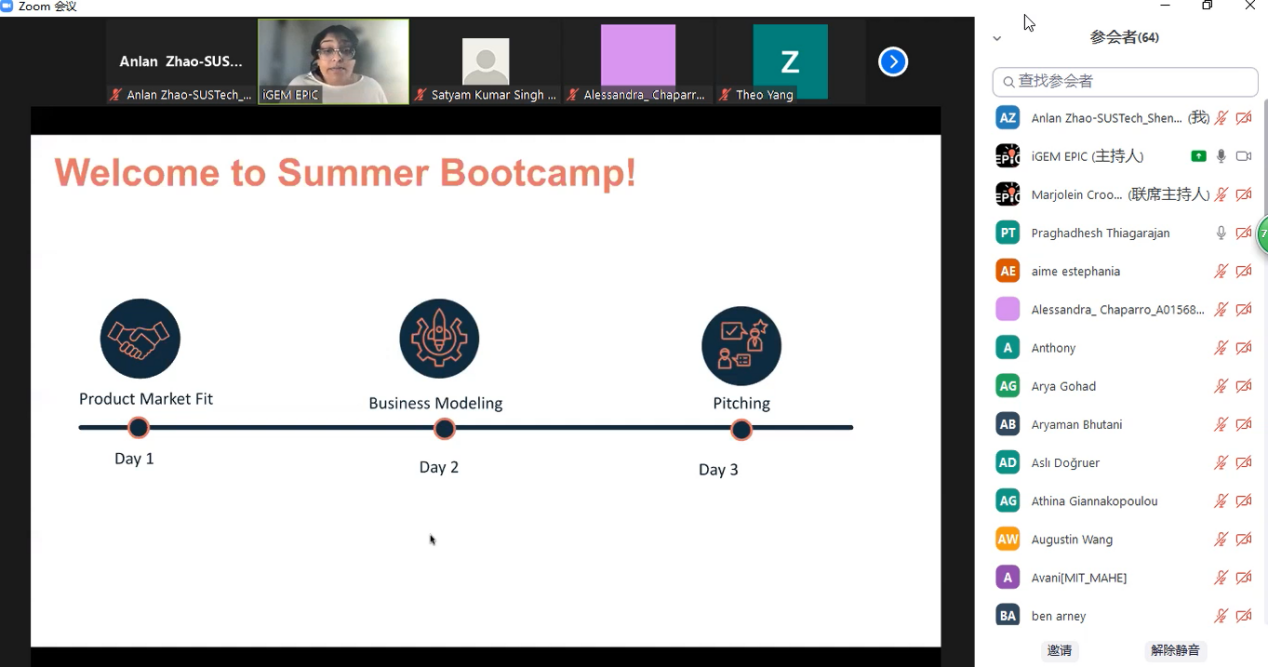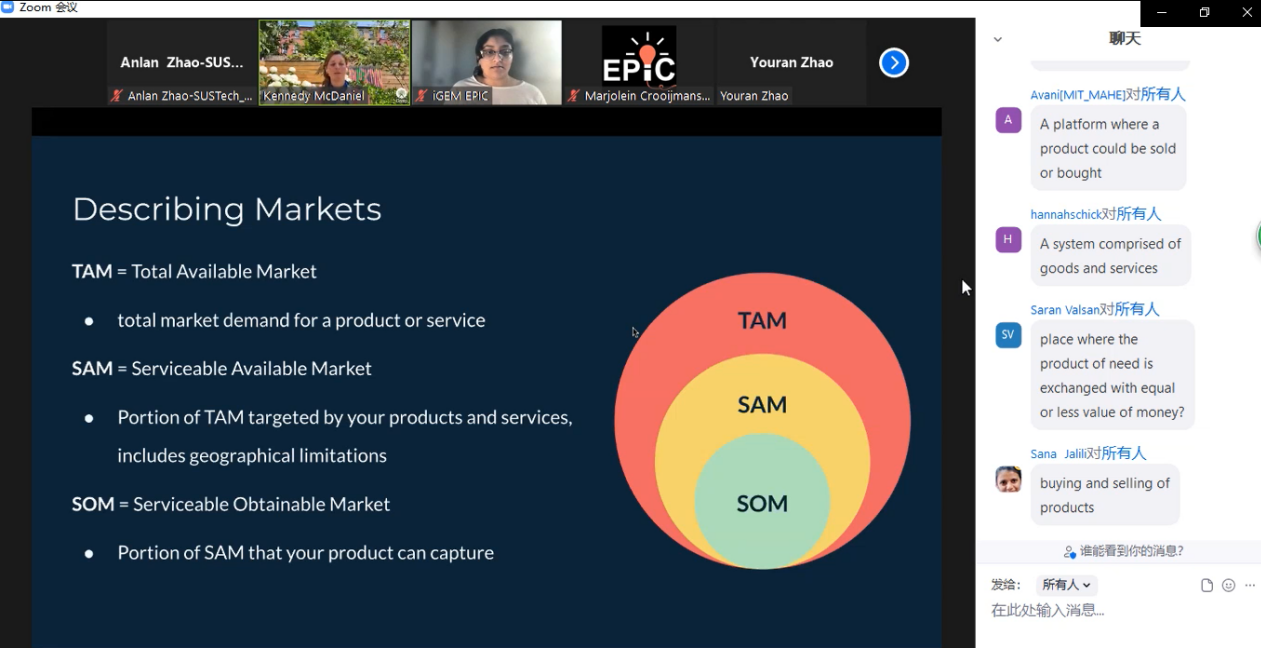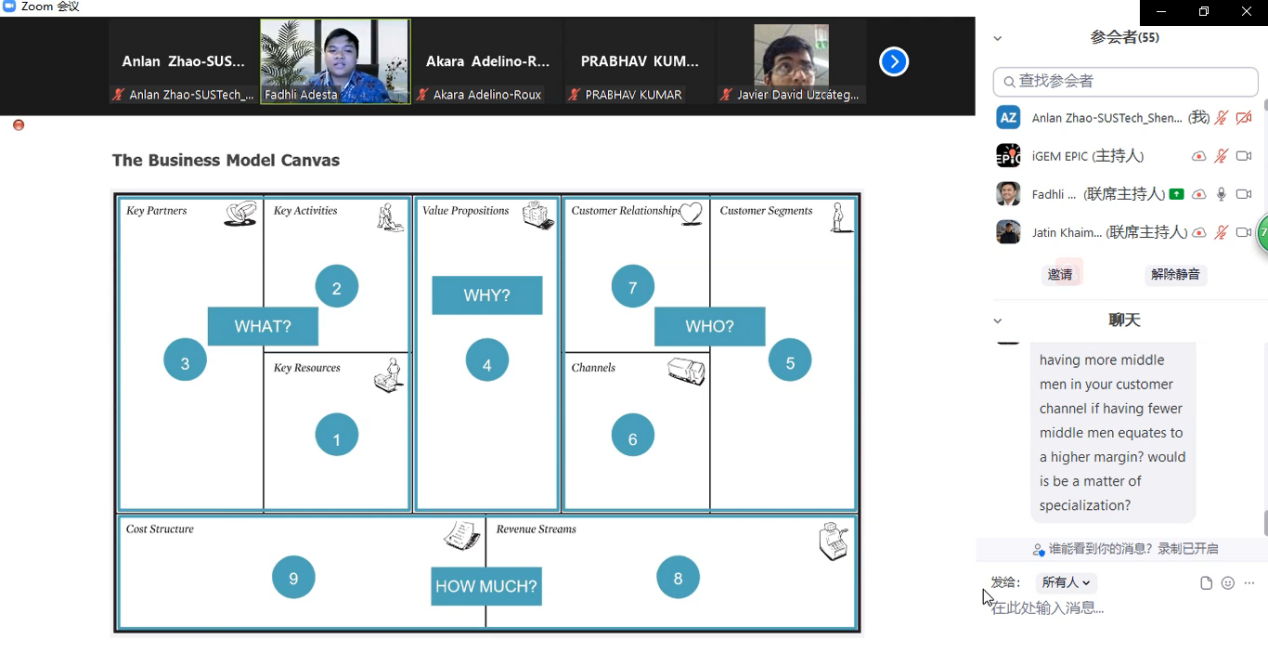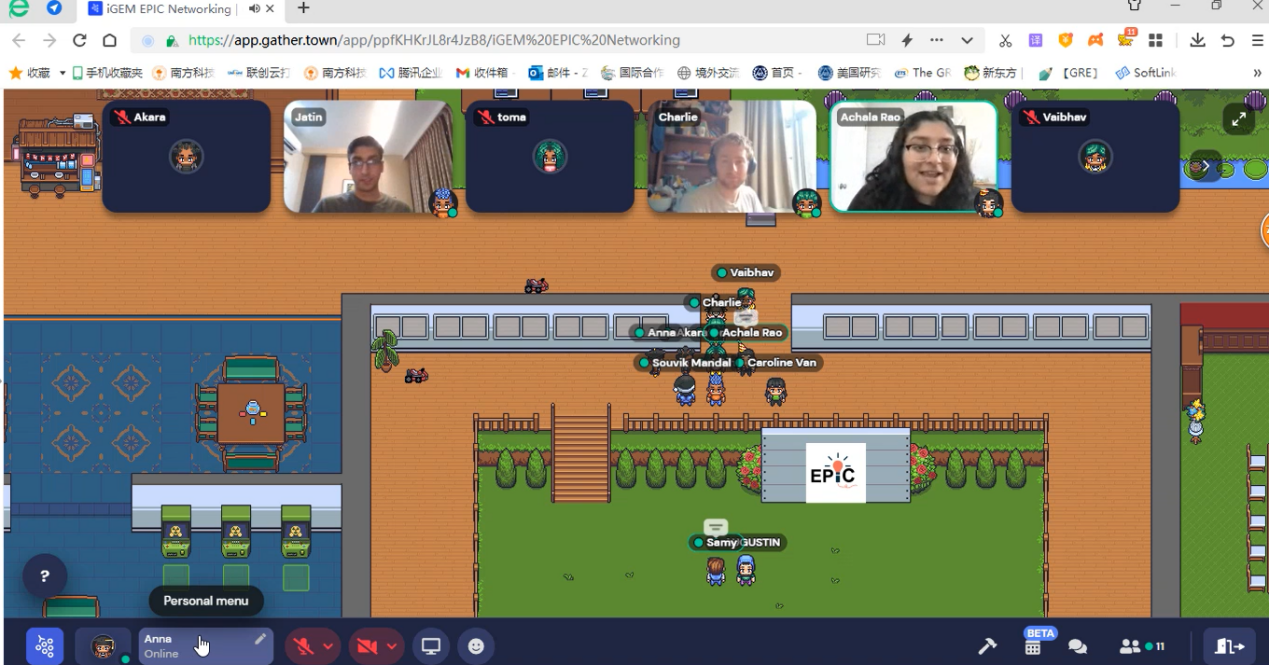On Jul 2, Fadhli Adesta focused on how to turn our iGEM project ideas into real solutions with an organization in written form. Thus, we have known that the business model canvas and its components.
In the Business Model Canvas, we need to answer WHAT by completing three parts: Key Partners, Key Activities, Key Resources; and answer WHY by completing one part: Value Propositions; and answer WHO by completing three parts: Customer Relationships, Customer Segments, Channels; and answer HOW MUCH by completing two parts: Cost Structure, Revenue Streams.
The Business Model Canvas is a hugh barrier to startup beginners but also allows startup beginners to figure out every details in their business plans.
After today, we have separated product users from customers, and figured out that our project fits the strategy of “to C” but not “to B”. These are all necessary and essential decision making during the journey to make ideas turn into real solutions with bioeconomy development.







